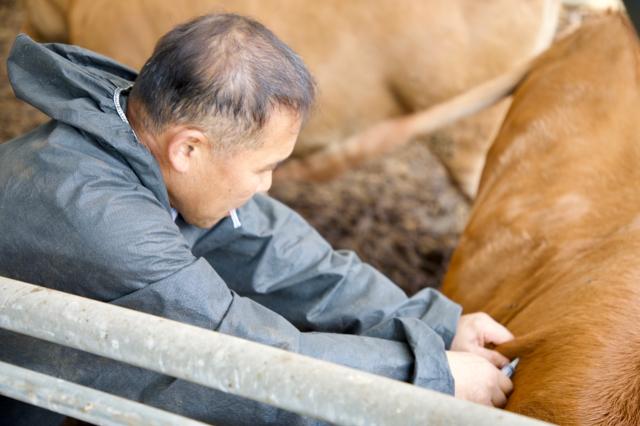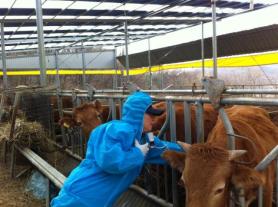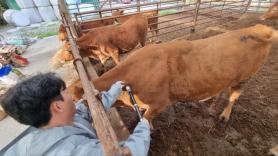
Lumpy skin disease (LSD) is a viral disease transmitted by blood-feeding insects such as flies, mosquitoes, and ticks. When a cow is infected with the virus, the animal would show symptoms of high fever, enlarged superficial lymph nodes, and multiple nodules, lumps measuring up to five centimeters (about two inches) on the skin.
Normally, LSD outbreaks take place during summer and in early autumn when the temperature is high and the air is humid. Most cattle can develop lifelong immunity after they recover from LSD, but many farmers use vaccines to prevent cattle from catching the disease. There was no official outbreak of LSD until the first reports of the disease in mid-October 2023.
The emergency headquarters for the control of LSD, operated by the government, said that the animal disease control tower decided to purchase more vaccines to stop the early-stage spread of the disease. Some 1.3 million doses of vaccines will be acquired by October 28 and 2.7 million doses will be acquired by October 31.
The LSD control tower said that 47 cattle farms were found to be infected with LSD as of October 27. The outbreak that started in the southwestern South Chungcheong Province now spread northwards to Incheon, a port city that is west of Seoul. According to the control tower, a total of 3,321 cows will be culled at the infected farms to prevent the spread of the disease.
The South Korean government predicted that the infection rate of the disease will eventually drop when cattle produce antibodies after vaccination. An epidemiological investigation is also being carried out to find the source of the outbreak on the possibility of foreign disease-carrying bugs being carried into South Korea by air current or carrier bugs brought into ports.
Copyright ⓒ Aju Press All rights reserved.




